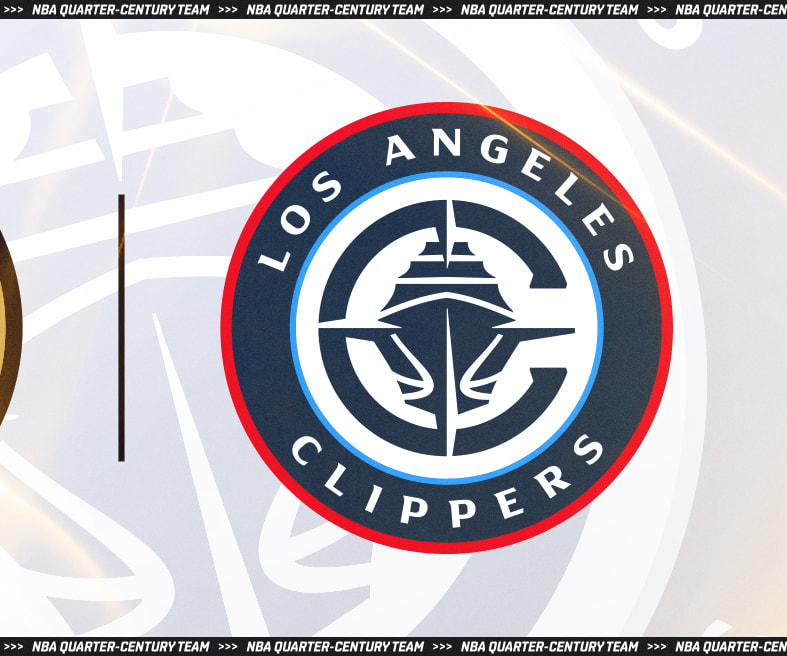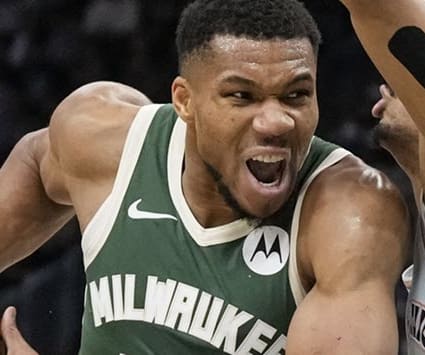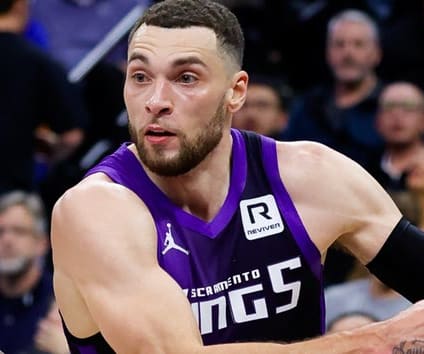2025 Stats
PTS
0.0
REB
0.0
AST
0.0
STL
0.0
BLK
0.0
ROS Projections

Signs with Pelicans
Jordan signed a one-year, $3.6 million contract with the Pelicans on Friday, ESPN's Shams Charania reports.
ANALYSIS
The Pelicans have had some tough injury luck in the frontcourt, so Jordan is being brought in to bolster the team's rebounding and interior defense. Yves Missi (ankle) and Karlo Matkovic (back) are both questionable to play Friday against the Spurs, while Kevon Looney (knee) is sidelined. That means Jordan could be thrown into action right away.
The Pelicans have had some tough injury luck in the frontcourt, so Jordan is being brought in to bolster the team's rebounding and interior defense. Yves Missi (ankle) and Karlo Matkovic (back) are both questionable to play Friday against the Spurs, while Kevon Looney (knee) is sidelined. That means Jordan could be thrown into action right away.
NBA Per Game Stats
Per Game
Total
Per 36
NBA Per Game Stats
Loading Per Game Stats...
2024 NBA Game Log
2024
2023
2022
2021
2020
2019
2018
2017
2016
2025 NBA Per Game Split Stats
Schedule
By Month
Starting/Off Bench
Days Rest
Vs Opp
By Result
2025 NBA Per Game Split Stats
Loading Split Stats...
Advanced Stats
Loading Advanced Stats...
Stat Review
2024
2023
2022
2021
2020
2019
2018
2017
2016
How does DeAndre Jordan compare to other players?
This section compares his stats with all players from the previous three seasons (minimum 200 minutes played)*. The bar represents the player's percentile rank. For example, if the bar is halfway across, then the player falls into the 50th percentile for that stat and it would be considered average.
True Shooting %
62.1%
Effective Field Goal %
65.0%
3-Point Attempt Rate
0.0%
Free Throw Rate
45.7%
Offensive Rebound %
14.1%
Defensive Rebound %
30.5%
Total Rebound %
22.7%
Assist %
9.6%
Steal %
1.0%
Block %
3.5%
Turnover %
15.2%
Usage %
12.8%
Fantasy Points Per Game
12.8
Fantasy Points Per Minute
1.0
NBA Historical Fantasy Stats
Historical ADP
Loading Historical ADP...
Pelicans Depth Chart
Our full team depth charts are reserved for RotoWire subscribers.
Subscribe Now
Pelicans Rotation: Minutes Breakdown
Loading Pelicans Rotation Data...
Average Fantasy Points
Minutes
FanDuel
DraftKings
Yahoo
FantasyDraft
Head2Head
Sorare
Average Fantasy Points are determined when DeAndre Jordan was active vs. non-active during the season. Click here to view average fantasy points for a different time period.
Loading Average Minutes...
Past Fantasy Outlooks
2024
2023
2022
2021
2020
2019
2018
2017
2016
2015
2014
2013
2012
2011
2010
2009
2008
Now in the twilight of his career, Jordan will return to Denver for another season, serving as a veteran leader, primarily in the locker room. He averaged just 11.0 minutes per game in 36 regular-season appearances during the 2023-24 season, putting up 3.9 points and 4.4 rebounds. The addition of Dario Saric and the improved play of Peyton Watson will make finding playing time tough for Jordan. He is unlikely to feature more than a handful of times throughout the season, typically appearing in garbage time or when Nikola Jokic is unavailable. At this point, Jordan has zero fantasy value, even in deeper formats.
More Fantasy News

Career-low 3.7 PPG in 2024-25
Jordan finished the 2024-25 campaign with averages of 3.7 points, 5.1 rebounds, 0.9 assists, 0.5 blocks and 0.3 steals across 12.3 minutes per game in 56 regular-season outings (five starts).
ANALYSIS
Subscribe now to instantly reveal our take on this news.
Subscribe now to instantly reveal our take on this news.

Plays five minutes
Jordan recorded one rebound across five minutes during Monday's 105-102 loss to the Clippers in Game 2 of the first round of the Western Conference playoffs.
ANALYSIS
Subscribe now to instantly reveal our take on this news.
Subscribe now to instantly reveal our take on this news.

Slides to bench Friday
Jordan won't start in Friday's game against the Warriors.
ANALYSIS
Subscribe now to instantly reveal our take on this news.
Subscribe now to instantly reveal our take on this news.

Dominates glass in spot start
Jordan closed with 10 points (2-4 FG, 6-12 FT), 17 rebounds, one assist, one block and one steal over 36 minutes during Wednesday's 113-106 loss to San Antonio.
ANALYSIS
Subscribe now to instantly reveal our take on this news.
Subscribe now to instantly reveal our take on this news.

Starting sans Jokic
Jordan is in the starting lineup for Wednesday's game against the Spurs, Paul Garcia of ProjectSpurs.com reports.
ANALYSIS
Subscribe now to instantly reveal our take on this news.
Subscribe now to instantly reveal our take on this news.
Latest Fantasy Rumors

Could remain with Denver
The Nuggets are interested in re-signing Jordan, Mike Singer of The Denver Post reports.
ANALYSIS
Jordan wasn't a key contributor down the stretch for the Nuggets and didn't have a rotation role in the playoffs, but the organization is keen on keeping him around due to his veteran leadership. Denver's head of basketball operations, Calvin Booth, sees the big man as one of the veteran leaders on the team along with other soon-to-be free agents such as Jeff Green and Reggie Jackson.
Jordan wasn't a key contributor down the stretch for the Nuggets and didn't have a rotation role in the playoffs, but the organization is keen on keeping him around due to his veteran leadership. Denver's head of basketball operations, Calvin Booth, sees the big man as one of the veteran leaders on the team along with other soon-to-be free agents such as Jeff Green and Reggie Jackson.















